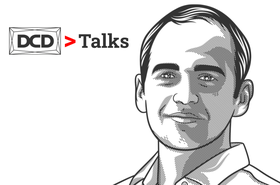For data center teams, growth is good. Hybrid work models and digital business are fueling fast-paced growth in the data center market around the world. Hyperscalers, internal enterprise data center teams and colocation providers are all rushing to meet greater digital demand by building or leasing new white space.
Between 2020 and 2025, the colocation industry alone will add close to 2,000 MW of new data center capacity each year globally, with the Europe, Middle East and Africa (EMEA) market expected to occupy 27 percent of this space.
As a result, data center, facility and IT teams are reconsidering the layout of data center floor space and the design of IT and power distribution architectures to meet emerging business and technical requirements.
In our white paper, ‘Choosing the best power distribution unit for your data center’, we highlight key market trends and discuss how best to address them with a flexible remote power distribution system, that can be consistently deployed in facilities and easily scaled across data center networks and geographies. These trends include:
Maintaining continuous uptime
Digital businesses require constant connectivity and availability of compute resources to ensure high workforce productivity and an exceptional customer experience.
Despite this fact, on-site power management issues still represent one out of three power outages globally. That’s why European data center operators are increasingly building redundancy into their model, with dual power feeds, redundant Uninterruptible Power Supply (UPS) and two-stage power distribution design.
Many have turned to custom-built remote power panels to meet power distribution needs in the past. However, standardized solutions provide data teams with compelling business and technology advantages they’ll likely want to exploit as demand for computing resources continues to soar.
Ensuring speed of deployment
Data center teams want to be able to outfit new space quickly – and manufacturers have responded. Vendors have shortened the time to provision a new large data center of 20 MW or more to just nine or 10 months – or even as short as six months.
All of these new facilities will require effective power distribution systems, while existing data centers will also typically refresh equipment every year. Custom purpose-built remote power panels provide high-density power distribution but require long lead times to plan and install. They also must be certified on-site by system integrators.
The Vertiv™ Liebert® RXA, available in 250 and 400 Amps ratings, is a standardized solution that provides fast and streamlined deployment. It provides a remote power panel configurator that enables data center teams to meet 80 percent of their typical market applications with a low time investment.
Employees don’t even need to know what final IT loads they will be running, just the maximum IT load that is expected. They can leave the final setup to the system integrator who installs the unit and populates circuit breakers and sensors on-site. Relocating the power distribution system is also feasible and simple with the site electrician’s support.
Moving forward, data center teams can quickly add or change breakers without shutting down the Vertiv™ Liebert® RXA, thanks to the hot swappable panelboard with 84P available.
Using Vertiv™ Liebert® DPM, the Liebert RXA’s power monitoring system, it’s easy to set new configurations and have a complete overview of all circuits and power consumption, allowing users to optimise load distribution, and ultimately, increase cost efficiency and energy efficiency within the data center.
Maximizing data center floor space
Of the world’s top 10 most expensive data markets, Europe represents four. It costs $11.4 USD/w to build in Zürich, $9.1/w in London, $8.9/w in Stockholm and $8.8/w in Copenhagen.
The top 10 largest EMEA data centers range from 74,300 to 9,000 square metres, while many facilities are obviously much, much smaller. That’s why remote power panels need to come in the smallest possible footprint.
Vertiv Liebert RXA has a footprint of 604x329 mm, saving space for more IT equipment. In addition, data center teams can install the unit in multiple layouts, including back-to-back or side-by-side, reaching up to 84P in a single unit and 168P for a dual unit.
Future-proofing technology architectures
Given unstoppable demand for all things digital, data center teams also want to future-proof their approach to support growing rack density and power distribution needs. Industrial Internet of Things (IIoT) applications, smart systems of intelligence, digitised products and services, virtual and augmented reality will all require powerful computing resources.
Meanwhile, 5G will make it easier to enable data-intensive automation and services, and execute real-time analytics on vast data sets. That means power distribution is playing an even more important role than ever at data centers today.
Monitoring power distribution
Data center teams want to up their power game by ensuring a continuous flow of power, identifying anomalies and resolving issues before they become outages. While all remote power panels provide intelligent, integrated power monitoring, their capabilities may vary.
Vertiv Liebert RXA has an easy-to-use color touchscreen display and incorporates Liebert DPM which simplifies monitoring and management. It achieves this by providing teams with information about unit setup and operations, with the ability to achieve within 1.5 percent accuracy in voltage, current, power and energy metering readings.
Scaling solutions across geographies
As enterprise data center teams and colocation providers scale their presence across the EMEA region, standardization is of growing importance.
Maintaining consistency across facilities and regions means that data center teams can simplify multiple processes, from ordering and installation to monitoring and maintenance, upgrades, and ultimately, replacement of power distribution systems.
For these requirements, standardized remote power panels such as Liebert RXA provide an Edge solution. Prebuilt and configured, certified and tested, standardised remote power panels provide out-of-the-box power distribution once connected to branch circuits. That simplifies both facility startup and expansion, and overall management or larger data center networks.
Conclusion
When it comes to supporting business growth with remote power distribution operations, standardization provides multiple compelling advantages over custom-built solutions.
Vertiv Liebert RXA enables you to speed deployment, simplify day-to-day operations and scale solutions across your geographic footprint, all while improving your uptime, visibility and control.
For installations that are better suited to a busbar solution, the Vertiv™ Liebert® MBX Busway provides reliable power distribution for any sized data center, keeping floor space open for equipment. It is a customizable, modular solution with integrated finger-safe capabilities, available in 250, 400, 630,800 and 1,000 Amps ratings.
To find out more, download Vertiv’s white paper here.
More from Vertiv
-

DCD>Talks Modular Construction with Kresimir Krpan
We sat down with Kresimir Krpan, Sales Director Solutions EMEA at Vertiv, to discuss modular construction and the benefits that come with it
-

Sponsored What will the data center industry look like post-pandemic?
From sustainability to climate change, the topics set to dominate the data center conversation in 2022
-

Sponsored Streamlining the Edge
Is your Edge infrastructure ready for deployment? Identifying your Edge archetype could help speed up the process

